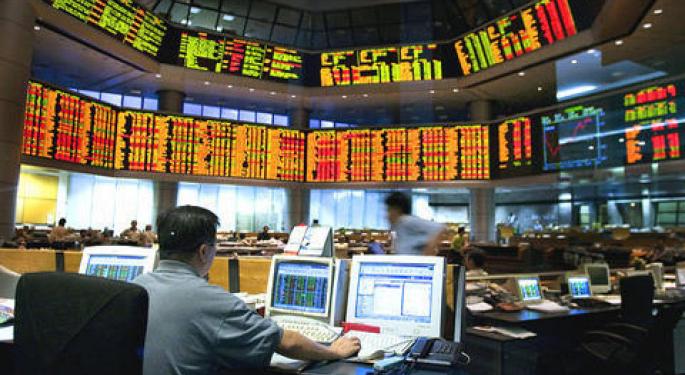The Notion Of A "Fat Finger Trade" Is A Ridiculous Explanation For Yesterday's Meltdown
Yesterday when U.S. equity markets went into free fall during afternoon trading, taking the Dow Jones Industrial Average momentarily below 10,000, there were reports that a so-called "fat finger" error may have been responsible for the meltdown.
Some observers speculated that a Citigroup trading desk sent an order into the market to sell $16 billion worth of stock or S&P e-mini futures contracts (depending on sources) when the order size was supposed to be $16 million. This is a ridiculous explanation for what happened yesterday. I would be shocked if that was the case.
It would be an incredible coincidence that a massive order-entry error would occur at the exact time that protests in Athens began to turn violent. Traders around the world were transfixed to television screens broadcasting the frightening images of protesters trying to break through a line of police protecting the Parliament building.
CNBC reported that during the time right before the crash, people on trading floors were watching the Greek protests and waiting for something to react to in the markets.
I think that yesterday was a legitimate panic event, which was amplified by structural cracks in our market structure. The initial selling momentum was likely very real and could have easily driven the market down a couple of hundred points on top of the already substantial declines that had occurred earlier in the day.
At some point, it appears that high frequency traders, who provide liquidity to the market, began to withdraw their bids and actually started taking liquidity in an effort to flatten out their exposure. The computers likely sensed the volume of sell orders coming into the exchanges at that critical "panic" moment and pulled their bids all at once, accelerating the downside momentum.
At this point, technical levels began to be breached, setting off a flood of stop-loss orders and program trades attempting to profit from short term momentum. This phenomenon accelerated the crash.
As the meltdown progressed, the New York Stock Exchange halted trading in a number of stocks for 90 seconds. In today's day and age, however, many orders are routed to ECNs such as BATS and Direct Edge, rather than the floor of the NYSE. The halt at the NYSE, did not prevent orders from being filled in electronic markets.
Therefore, all of the sell volume that would normally be handled on the NYSE floor was directed to ECNs, where high frequency traders had removed their bids. All of this happened in the blink of an eye.
There was not enough liquidity on these electronic exchanges to absorb the volume of sell orders that came in at the same time. This is how we saw trades go off in stocks like Proctor & Gamble (NYSE: PG) and Accenture (NYSE: ACN) at ridiculous levels - all of the bids close to the last printed price were wiped out immediately and the ECN computers kept hitting any and all bids that they could find, no matter how low they were.
Eventually, cooler heads prevailed and buyers came swarming back into the market after realizing the ludicrous price of certain stocks. For example, PG moved about 25% higher in a matter of just a few minutes.
The trading activity yesterday revealed that there are fundamental structural problems in our markets, which must be addressed.
Anyone and everyone who has an interest in the integrity of global financial markets must demand that we are given a coherent, sensible explanation for Thursday's breakdown and a viable solution. Anything less than that should be viewed as unacceptable.
© 2025 Benzinga.com. Benzinga does not provide investment advice. All rights reserved.
Posted-In: Intraday Update



